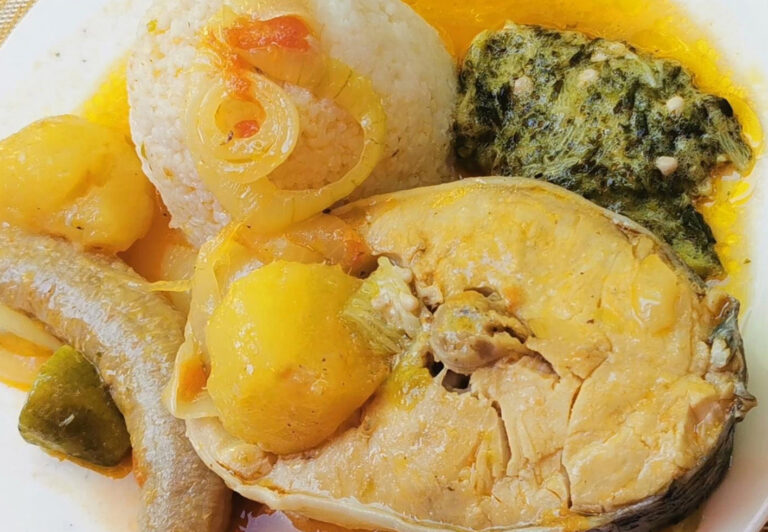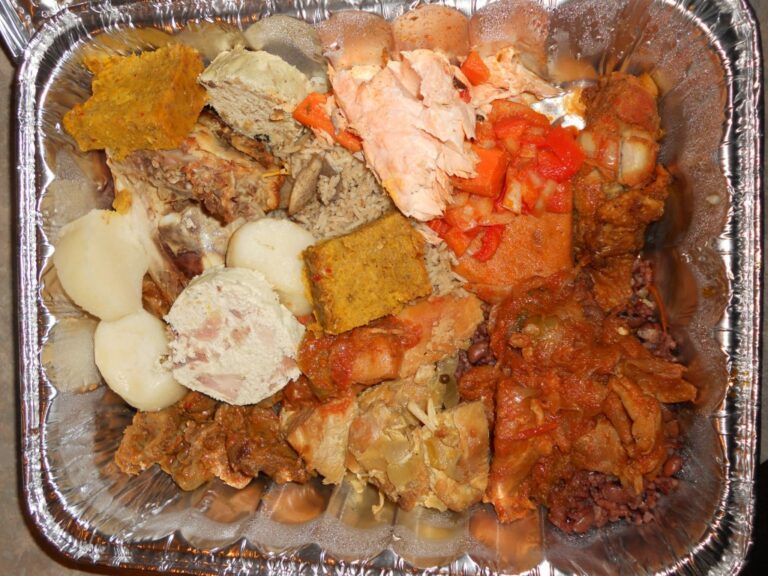Introduction: Seasonal Ingredients in Guinea-Bissau Cooking
Guinea-Bissau is a small West African country with a rich culinary heritage. Its cuisine is influenced by Portuguese, African, and Brazilian flavors, resulting in dishes that are diverse in taste and texture. One of the unique aspects of Guinea-Bissau cuisine is the use of seasonal ingredients. The country’s tropical climate allows for the growth of a variety of fruits, vegetables, and grains throughout the year, which are harvested and used in traditional dishes.
The Relationship Between Climate and Cuisine in Guinea-Bissau
The climate in Guinea-Bissau is tropical with two distinct seasons: a rainy season from June to October and a dry season from November to May. The seasonal changes have a significant impact on the availability and use of ingredients in the country’s cuisine. The rainy season brings an abundance of cassava, sweet potatoes, and leafy greens, which are used in soups and stews. In contrast, the dry season is characterized by the cultivation of rice, millet, and peanuts, which are staples in many dishes. The festive season is also a time for unique ingredients, as local fruits and spices are used for special occasions.
Rainy Season Ingredients: Cassava, Sweet Potatoes, and Leafy Greens
During the rainy season, Guinea-Bissau experiences heavy rainfall, creating the perfect conditions for the growth of cassava, sweet potatoes, and leafy greens. These ingredients are used in a variety of dishes, including the national dish Xassa, which is a stew made from cassava leaves and fish or meat. Another popular dish is Caldo de Mancarra, which is a soup made from sweet potatoes and peanuts. Leafy greens such as spinach and kale are also used in stews and soups, providing essential nutrients and flavor.
Dry Season Ingredients: Rice, Millet, and Peanuts
During the dry season, rice, millet, and peanuts are the primary ingredients used in many dishes. Rice is a staple in Guinea-Bissau cuisine and is often served with stews or grilled meats. Millet is used in the popular dish Funge, which is a porridge made from millet flour and water. Peanuts are also a significant ingredient in many dishes and are used to make a peanut sauce, which is served alongside rice or stews.
Festive Season Ingredients: Local Fruits and Spices for Special Occasions
Guinea-Bissau has several festive occasions throughout the year, and local fruits and spices are used to make special dishes for these events. For example, during Ramadan, Bissap juice is served, which is a drink made from dried hibiscus flowers, sugar, and water. During the Christmas period, Kansiyé is a popular dish made from rice, chicken, and spices such as cinnamon and nutmeg. Mangoes, pineapples, and papayas are also widely used in desserts and drinks during the festive season.
Conclusion: Seasonal Ingredients, Traditional Flavors in Guinea-Bissau Cuisine
In conclusion, Guinea-Bissau cuisine is heavily influenced by seasonal ingredients, with each season offering a unique range of flavors. The use of cassava, sweet potatoes, and leafy greens during the rainy season, rice, millet, and peanuts during the dry season, and local fruits and spices during festive occasions, creates a diverse range of dishes that showcase the country’s culinary heritage. The traditional flavors of Guinea-Bissau cuisine are something to be savored and celebrated.




